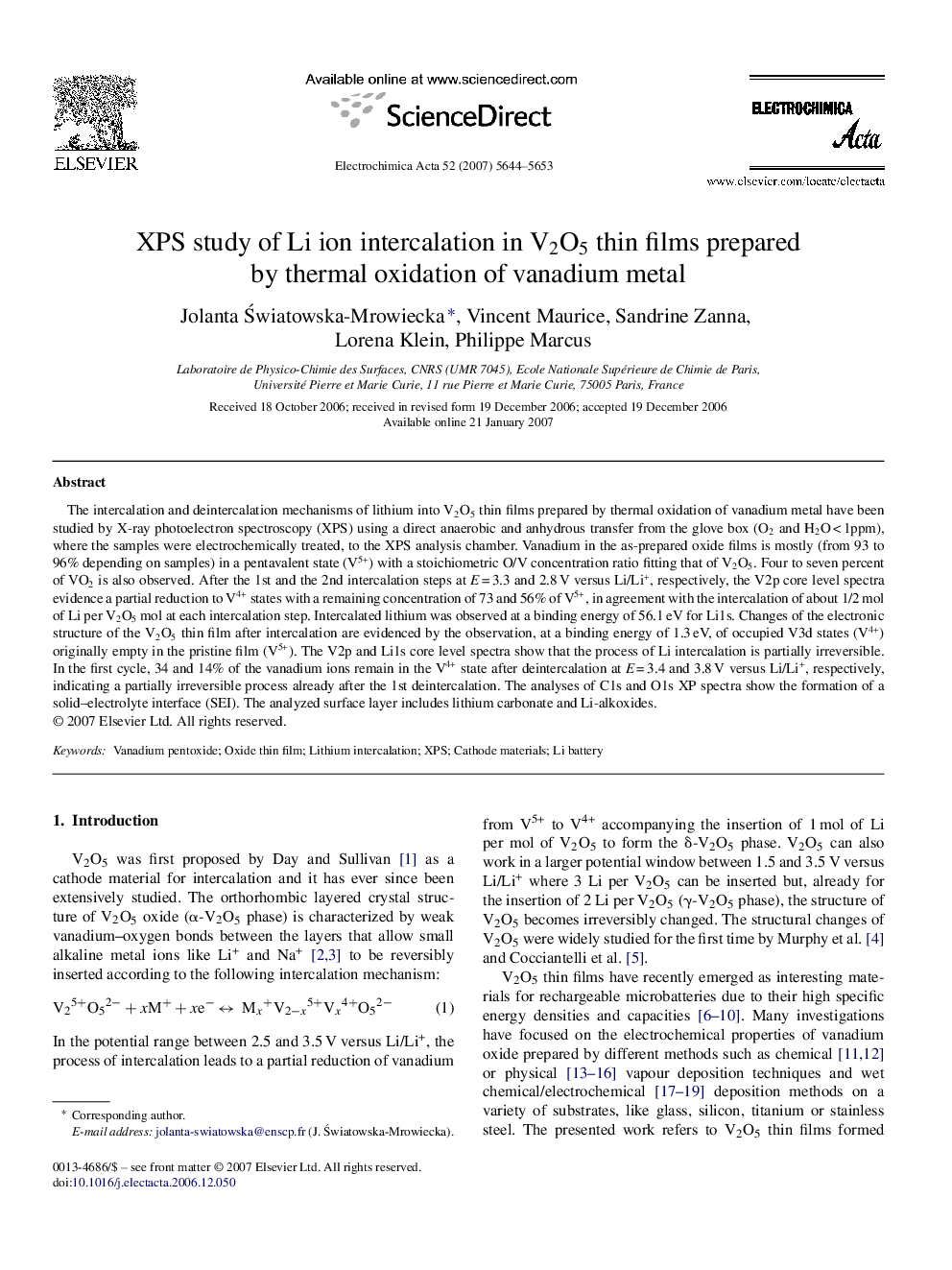| کد مقاله | کد نشریه | سال انتشار | مقاله انگلیسی | نسخه تمام متن |
|---|---|---|---|---|
| 195895 | 459824 | 2007 | 10 صفحه PDF | دانلود رایگان |

The intercalation and deintercalation mechanisms of lithium into V2O5 thin films prepared by thermal oxidation of vanadium metal have been studied by X-ray photoelectron spectroscopy (XPS) using a direct anaerobic and anhydrous transfer from the glove box (O2 and H2O < 1ppm), where the samples were electrochemically treated, to the XPS analysis chamber. Vanadium in the as-prepared oxide films is mostly (from 93 to 96% depending on samples) in a pentavalent state (V5+) with a stoichiometric O/V concentration ratio fitting that of V2O5. Four to seven percent of VO2 is also observed. After the 1st and the 2nd intercalation steps at E = 3.3 and 2.8 V versus Li/Li+, respectively, the V2p core level spectra evidence a partial reduction to V4+ states with a remaining concentration of 73 and 56% of V5+, in agreement with the intercalation of about 1/2 mol of Li per V2O5 mol at each intercalation step. Intercalated lithium was observed at a binding energy of 56.1 eV for Li1s. Changes of the electronic structure of the V2O5 thin film after intercalation are evidenced by the observation, at a binding energy of 1.3 eV, of occupied V3d states (V4+) originally empty in the pristine film (V5+). The V2p and Li1s core level spectra show that the process of Li intercalation is partially irreversible. In the first cycle, 34 and 14% of the vanadium ions remain in the V4+ state after deintercalation at E = 3.4 and 3.8 V versus Li/Li+, respectively, indicating a partially irreversible process already after the 1st deintercalation. The analyses of C1s and O1s XP spectra show the formation of a solid–electrolyte interface (SEI). The analyzed surface layer includes lithium carbonate and Li-alkoxides.
Journal: Electrochimica Acta - Volume 52, Issue 18, 10 May 2007, Pages 5644–5653